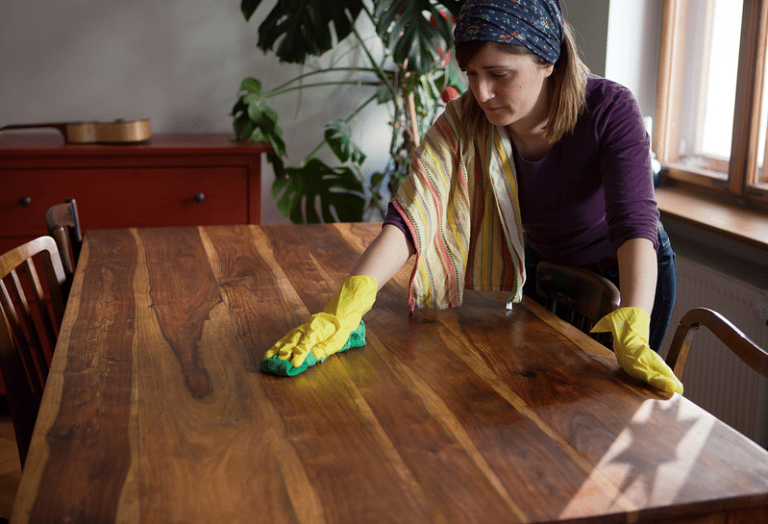
(Photo: Silvia Marks, Deutsche Presse-Agentur)
Water is the biggest enemy of wooden furniture: using too much water when cleaning will cause the wood fibers to expand and distort the surface.
Here are some tips on how to care for your wooden furniture.
Varnishing
FiveArnish protects the wood from moisture and stains, making it especially easy to care for. “A quick wipe with a damp cloth is all you need,” says Mareike Hermann of the German DIY Academy. “You don't need to use much water.”
Microfiber cloths are not recommended as they can trap particles and cause scratches, Hellman's advice is to “use an old T-shirt or cotton sheet.”
The following applies to all wood surfaces: “Only use products recommended by the manufacturer,” says Andreas Ruf of the Pro Solid Wood Initiative. “We don't recommend using commercial cleaners, as they may contain substances that will damage the wood.”
Minor stains or discoloration can be removed with a mild detergent or lighter fluid.
“If this doesn't work or if the damage is too extensive, you'll have to sand down the varnish and reapply,” says DIY expert Hermann. Small scratches and dents can be filled with hard or soft wax. Very fine scratches and marks can be removed with an abrasive pen of the appropriate color.
Glaze and oil painting
Never place water near furniture that's been treated with oils or glazes. “A soft, dry, lint-free cloth works best,” says Hellman. “A soft brush or soft vacuum cleaner nozzle also work well.”
Heavier damage, such as marks from frequent touching, can be scrubbed off with an abrasive cloth, Ruff explains: “This removes the top layer of oils and wax that holds the dirt.”
“To remove deep scratches or dents, you'll need to sand the furniture,” adds Ruff. Wipe the damaged area with a damp cloth and iron it on a low setting. Finally, apply a new coat of oil or glaze.
Untreated
Natural surfaces will crack and dry out if not properly treated, which is where water comes in. “Scrub untreated furniture with a damp sponge and mild natural soap,” explains Hellman. Afterwards, it's important to let the furniture dry.
Scratches and stains can be removed relatively easily by sanding down your furniture, but it's best to prevent them in the first place: “Always place coasters under glasses, vases and flower pots,” says Hellman.
Plywood
Plywood furniture can be treated in the same way as solid wood by varnishing, polishing, oiling etc. “Plywood is very delicate,” explains Ursula Geismann of the Veneer + Nature Initiative.
Plywood is a thin plank of wood between 0.3 and 6 millimeters thick that is glued to a base material like chipboard or plywood. Water, heat, and soap are harmful to these thin woods. “Too much moisture will cause the veneer to expand and peel off thin layers,” Geissman explains. “If that happens, it's time to call a professional.”
By Katia Fischer German Press Agency


